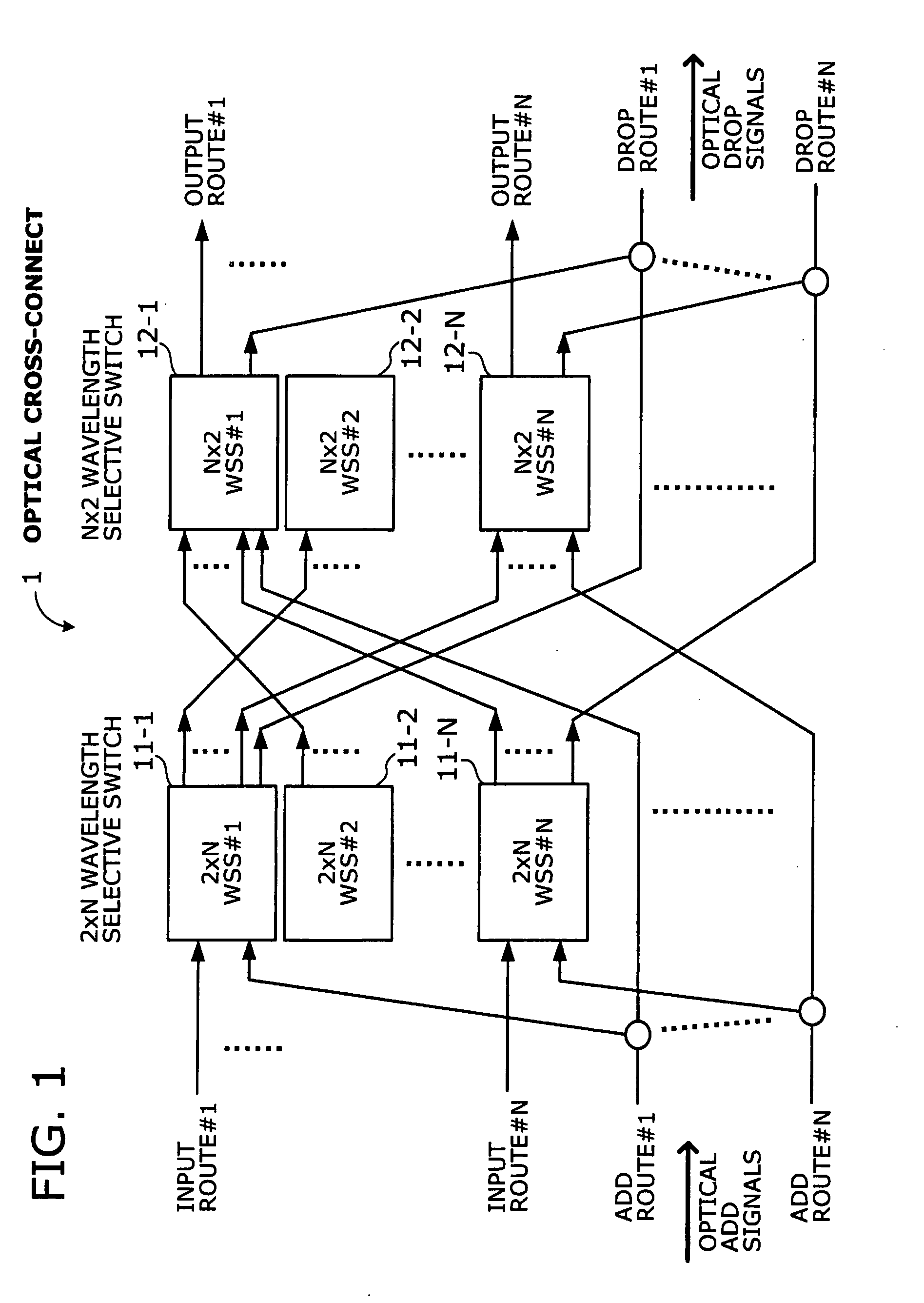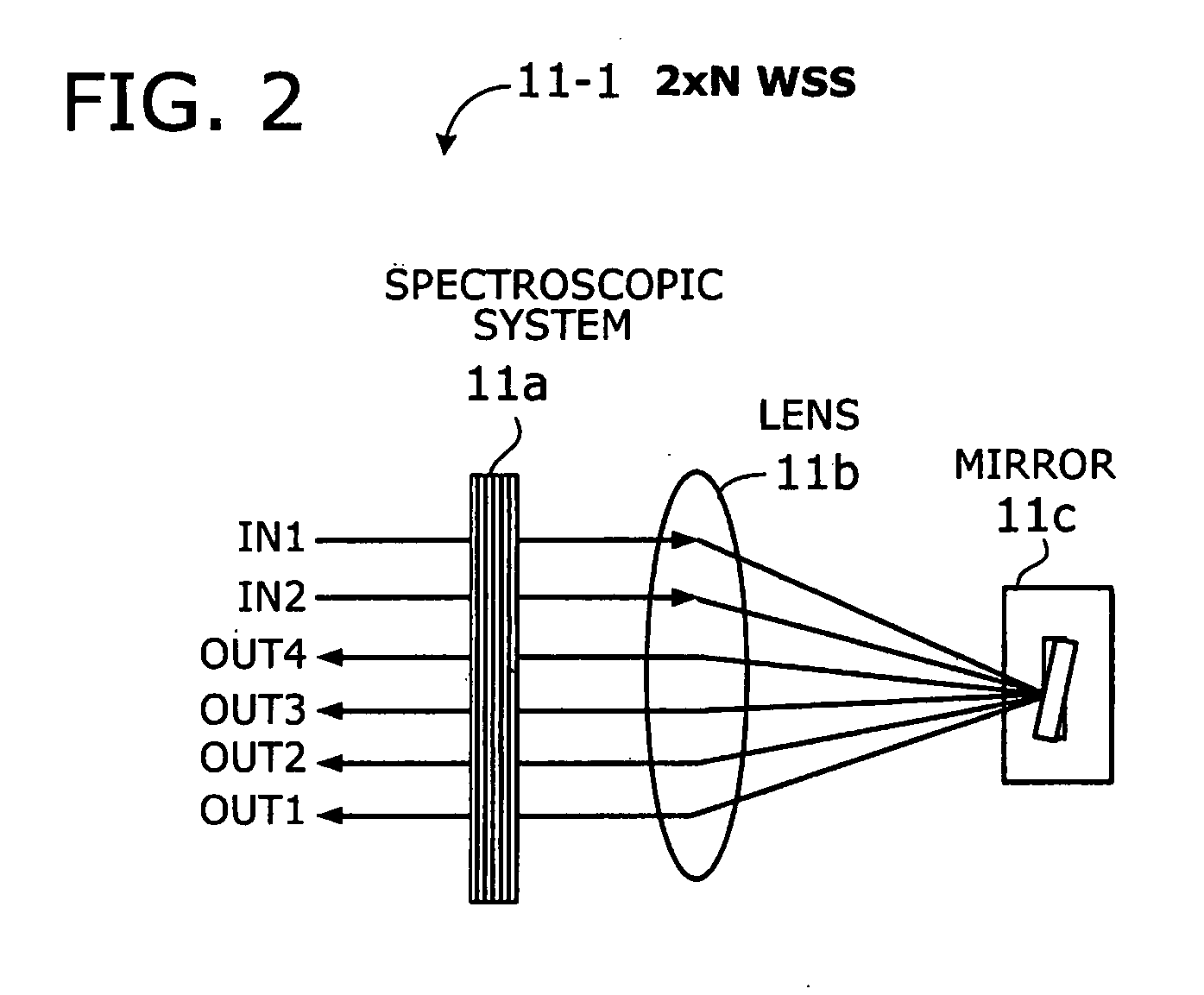Optical cross-connect using wavelength selective switches
a wavelength selective switch and optical cross-connect technology, applied in the field of optical cross-connect, can solve the problems of increased product cost, increased number, and above-described architecture of conventional optical cross-connects,
- Summary
- Abstract
- Description
- Claims
- Application Information
AI Technical Summary
Benefits of technology
Problems solved by technology
Method used
Image
Examples
Embodiment Construction
[0056]Preferred embodiments of the present invention will be described below with reference to the accompanying drawings, wherein like reference numerals refer to like elements throughout.
[0057]FIG. 1 is a conceptual view of an optical cross-connect according to the present invention. This optical cross-connect 1 switches optical signals between N routes, which include input routes, N output routes, N add routes, and N drop routes (N=1, 2, . . . ). To perform this function, the optical cross-connect 1 includes (a) 2-input N-output (2×N) wavelength selective switches (WSS) 11-1 to 11-N coupled respectively to N input routes, and (b) N-input 2-output (N×2) wavelength selective switches 12-1 to 12-N coupled respectively to N output routes.
[0058]The nth 2×N wavelength selective switch (shown as 2×N WSS#n in FIG. 1) (n=1, 2, . . . N) coupled to the nth input route (input route #n) receives an optical signal from the nth input route at its first input port and an optical add signal from t...
PUM
 Login to View More
Login to View More Abstract
Description
Claims
Application Information
 Login to View More
Login to View More - R&D
- Intellectual Property
- Life Sciences
- Materials
- Tech Scout
- Unparalleled Data Quality
- Higher Quality Content
- 60% Fewer Hallucinations
Browse by: Latest US Patents, China's latest patents, Technical Efficacy Thesaurus, Application Domain, Technology Topic, Popular Technical Reports.
© 2025 PatSnap. All rights reserved.Legal|Privacy policy|Modern Slavery Act Transparency Statement|Sitemap|About US| Contact US: help@patsnap.com



